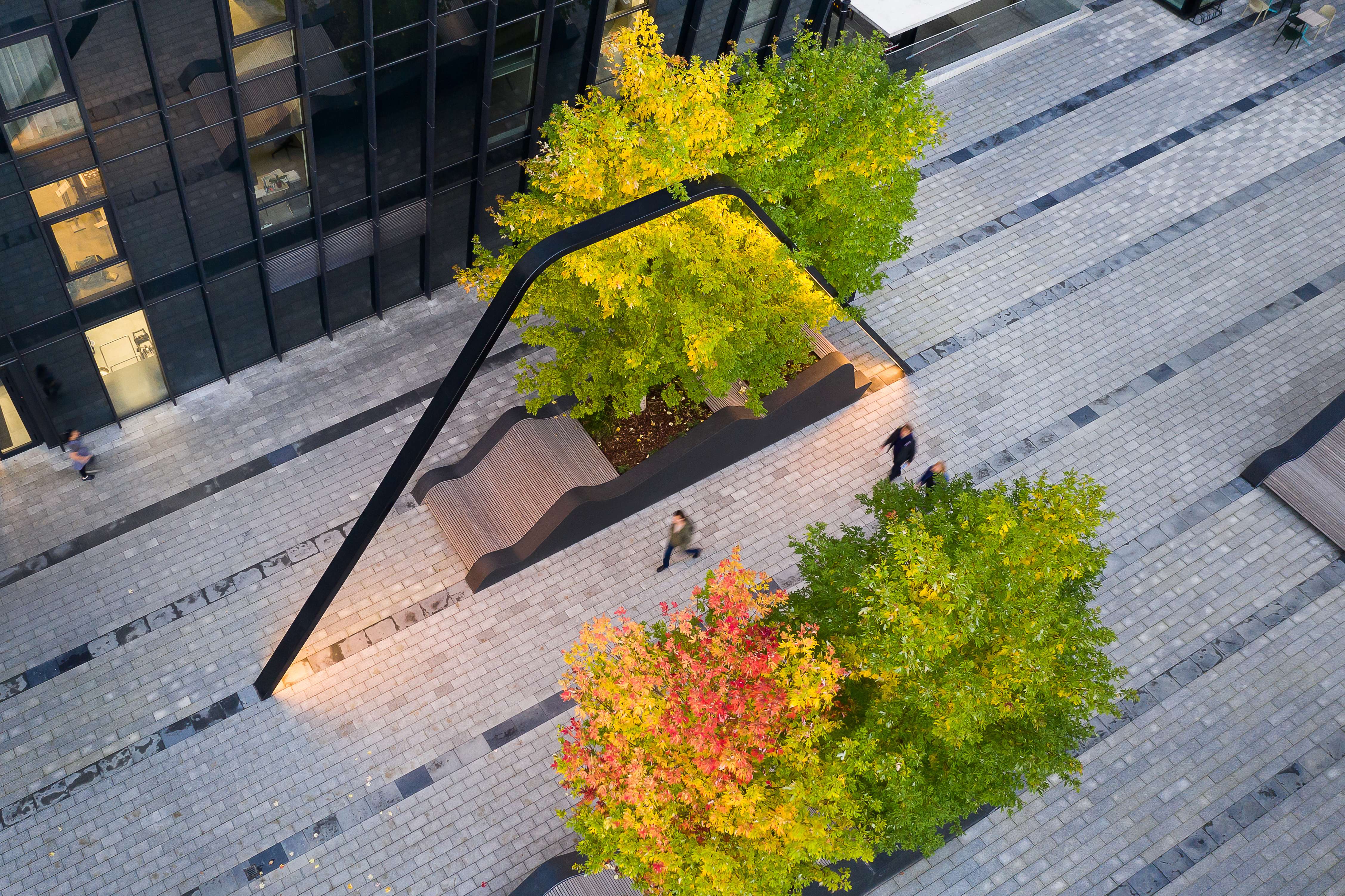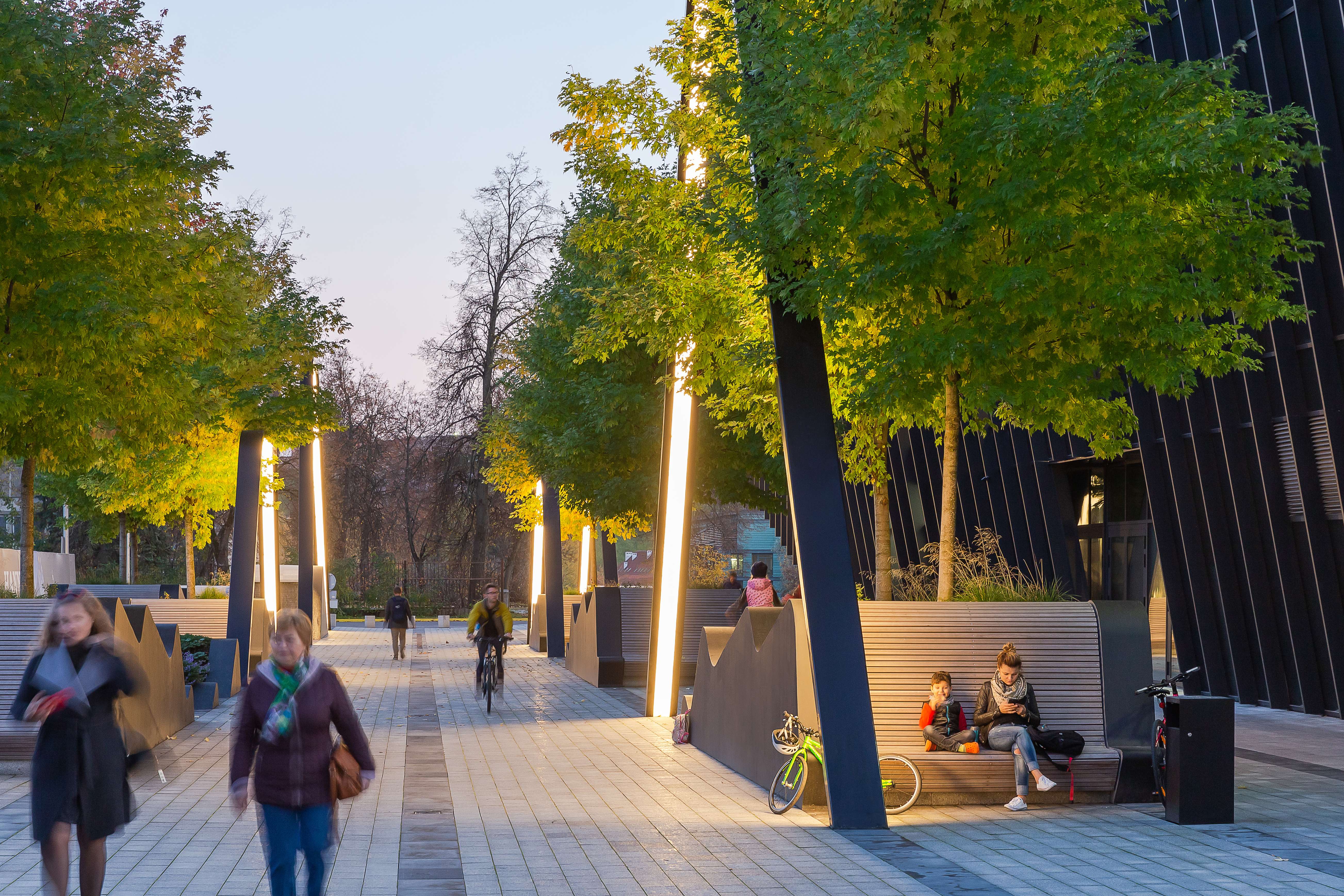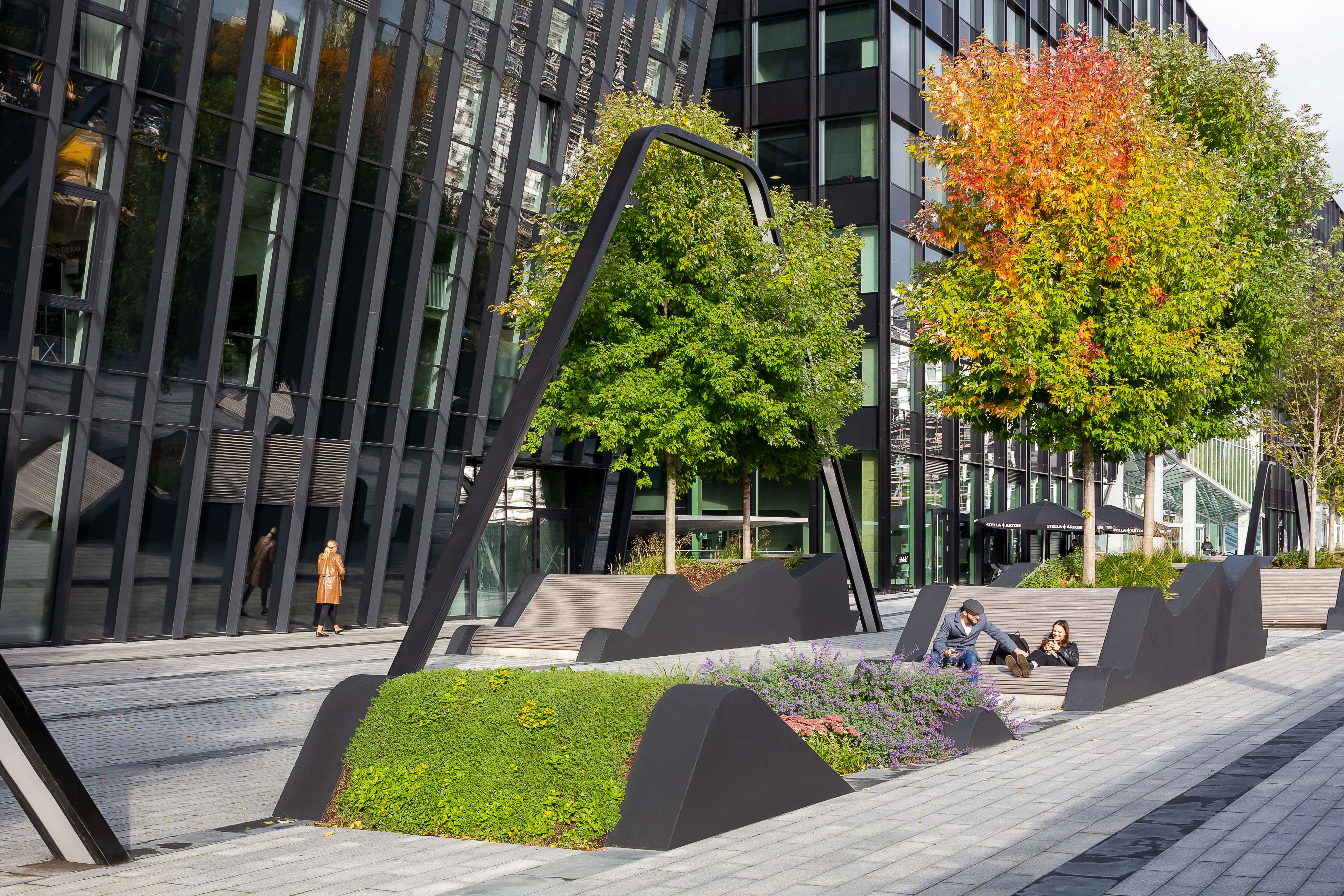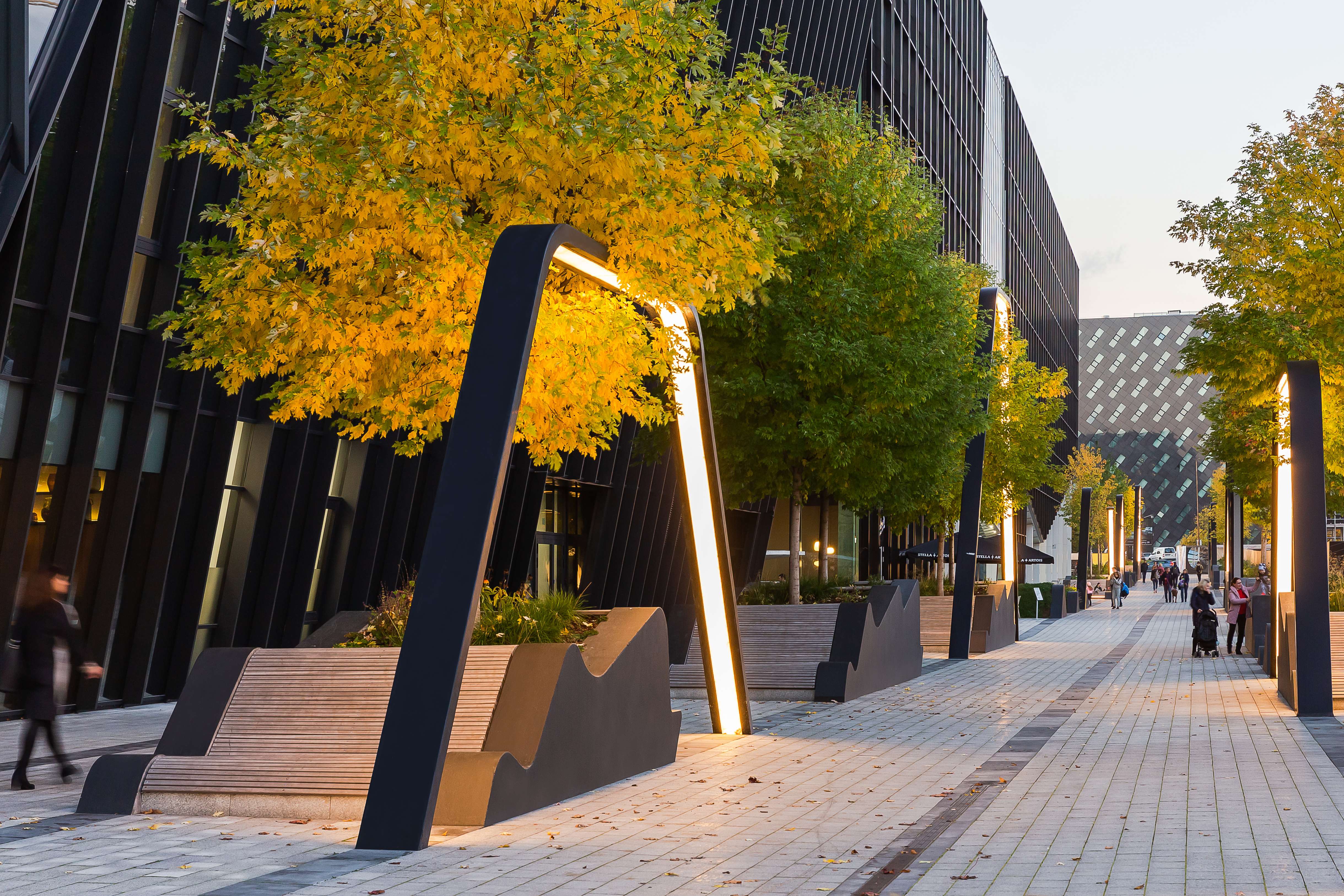







Vilnius Plaza
Vilnius Plaza
Vilnius Plaza
The main objective of Vilnius Plaza was to transform a long-neglected, but historically significant site into a vibrant and accommodating public space. What resulted was a significant civic destination that reflects the key values of contemporary urbanism - Connection, sustainability and inclusivity. Through innovative design the site has been able to reinvent and establish itself as an integral part of Vilnius' urban life, whilst bridging the historic city center with the emerging Snipiskes district.
The site was formerly occupied by the city's main Soviet era football stadium and had remained derelict for decades. Located between the Vilnius Cathedral to the South and the Snipiskes neighbourhood to the north, the site held enormous potential as a connective and cultural space. Now the site has been successfully reimagined as a bold new plaza that serves as a social platform and a spatial link within the city.
Key design features within the scheme include large angular bars that are both lighting and sculptural elements. Integrated planters provide the necessary soil depth for tree growth above the underground parking structure and offer comfortable, informal seating. Rain gardens manage seasonal storm water, while trees offer shade in summer and act as wind buffers in winter. The result is a promenade that invites residents and visitors to use the space for casual strolls, social gatherings, and moments of rest. The design was guided by a clear north-south urban and cultural axis, connecting historical landmarks to new residential developments.
Since it's completion, the plaza has become a valued public space and a cultural connector at the heart of Vilnius. What was once a stadium unused is now an active urban promenade that brings together people of all ages and backgrounds. The plaza's spatial structure encourages exploration and provides flexibility for various activities, both for daily use and public events. The Plaza's design successfully reactivates the historic site, reinforces pedestrian connectivity and contributes to a more resilient yet habitable urban environment. It reflects Vilnius' ongoing transformation into a city that embraces contemporary urbanism, sustainability, and a strong sense of place. Vilnius plaza is a prime example of how public space can act as both a physical and symbolic bridge linking the past and future, tradition and innovation, nature and city.
